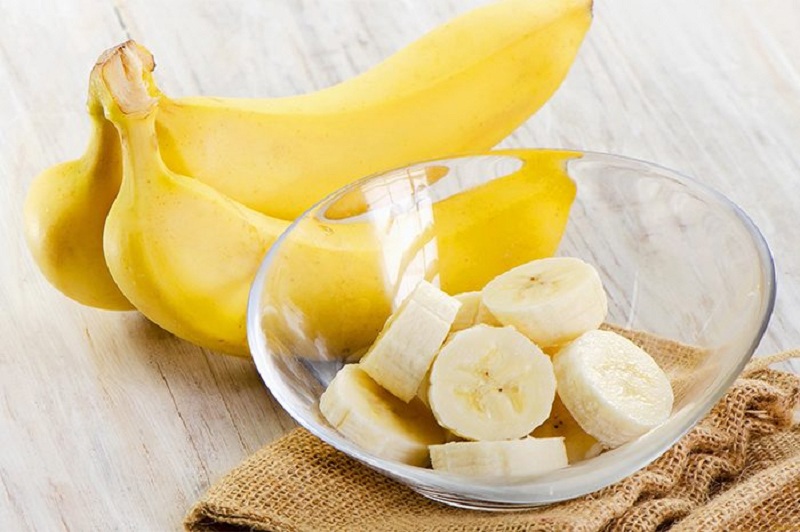The Japanese diet is one of the fastest and most effective ways to lose 5-8 kg in two weeks. However, it is very strict and it is necessary to know and strictly follow all the rules, up to the daily menu. Therefore, the diet is suitable only for physically healthy people and ready to “keep to the last.”
The essence of diet
The process of losing weight is triggered by a large reduction in calories consumed and an increase in proteins. The daily number of calories does not exceed 1100, and sometimes even 600. The amount of carbohydrates and fats is reduced to a minimum. The basis of the daily diet is dietary meat and fish (which is why this system is still known as the Japanese protein diet), as well as vegetables and fruits.
The essence of the Japanese diet is and in limiting the amount of food and the number of its receptions. There are only three meals a day, although in fact only 2 because breakfast consists only of unsweetened green tea or coffee. One of the meals is always protein or protein-vegetable.
Adhering to this power system, you must follow the following rules.
- Duration of the diet – no more than 14 days. In general, there are three options: 7, 13 and 14 days. The last two are the same, the difference is only in the psychological factor: for many 13 days, it is easier to withstand than 14.
- Breaks between diet courses – 2-3 years. The minimum allowed break is 6 months.
- The portions do not exceed 250 g.
- Snacks are prohibited.
- Dinner is preferably 3 hours before bedtime.
- All food is cooked for a couple, brewed, baked. Fry foods on oil and other fat are strictly prohibited.
- You need to drink 1.5-2 liters of pure still water.
- You can only eat products from the list of allowed. Add or replace available is prohibited.
- The Japanese diet is very strict and low-calorie, so on its length, it is better to reduce physical activity. It is permissible to conduct more static exercises, for example, yoga or Pilates.
- Be sure to observe the correct entrance and exit from the diet.
Products |
Most of the products, during weight loss, cannot be eaten. But there are also those that are forbidden not only in the diet process but also during the entry and exit from it :
- fast food;
- fatty meat and fish;
- baking and confectionery;
- sugar;
- sausages, smoked products, and canned food;
- carbonated drinks;
- Alcohol.
This food system is also known as the Japanese salt-free diet. This means that throughout the period salt consumption in any quantity is prohibited.
Check This Out: Healthy Breakfast To Lose Fat And Lose Weight By Eating
Despite the exotic name, the diet is affordable and relatively inexpensive. During the diet, only the following products are allowed to be consumed:
- low-fat beef and chicken fillet;
- chicken eggs;
- low-fat varieties of sea fish;
- fruits – everything, except grapes and bananas;
- lemon;
- vegetables: white cabbage, carrots, zucchini, and eggplant;
- ground coffee;
- green leaf tea;
- olive oil (for dressing salads);
- kefir up to 2.5% fat content;
- tomato juice (without salt);
- Crackers.
To supplement the list or replace something is impossible. The menu should include dishes only from the listed products.
Advantages and disadvantages
The advantages of this diet can be attributed to rapid weight loss of 5-8 kg. If the diet is observed only a week, the result will be less, up to 5 kg.
When losing weight, the result depends on the initial weight and its proximity to the norm. The higher the body mass index and the actual weight, the faster and in larger quantities will go the extra pounds.
The Japanese diet has one more significant plus – a long-term preservation of the result. However, for this, you need not return to the previous diet, but to come to a balanced diet. Especially it is necessary to refuse from harmful and high-calorie products, including cakes and pastries, sweets, fast food, and alcohol.
But there is nothing ideal, therefore there are also disadvantages of the Japanese diet and there are quite a few of them:
- Difficult to withstand 14 days of strict nutrition;
- Nutrition is unbalanced, as a result, the body does not receive all of the vitamin, macro, and microelements;
- Possible side effects in the form of rashes and brittle hair, brittle nails, tooth crumbling, dry skin;
- Not suitable for people with the presence of diseases.
To minimize and avoid problems with hair, skin, teeth and, in general, health – during the diet, take vitamin-mineral complexes.
 Contraindications
Contraindications
The Japanese diet is contraindicated:
- during pregnancy and lactation;
- children and adolescents;
- with diabetes;
- for any diseases of the gastrointestinal tract (ulcers, gastritis, etc.);
- with chronic kidney and liver diseases;
- with cardiovascular diseases;
- with avitaminosis and hypovitaminosis;
- if there is anemia.
In any case, it is better to consult a doctor before dieting. If you find yourself in one of the above groups, then from this power system.
Entering and leaving the diet
The key to success is not only in absolute compliance with the rules but also in the correct exit from the diet. It gradually returns your body to normal nutrition and fixes the result. A correct entry will prepare you physically and psychologically for this test.
For a week or two before starting the diet, start refusing to bake (especially cakes and pastries), semi-finished products, sausages, sweets, and sodas. Together with this, first gradually reduce the daily calorie content of food (the rejection of the listed products will already significantly reduce it).
A week before you start to reduce the amount of food. The first thing you need to reduce portions, and then remove snacks. Such a beginning will already serve as the first steps to losing weight, in addition, you will begin to understand whether you can withstand 14 days of strict nutrition.
It is important and respects the right menu after the end of the Japanese diet. First, you begin to gradually expand the list of products and add snacks. Then do portions a little more, increase the number of carbohydrates and fats. But to save the result, you need to keep a balanced diet all the time.
 Variations of the Japanese diet
Variations of the Japanese diet
In addition to the common form suggested above, the Japanese diet also has different options. Starting with the classical rice and ending with the water system.
Rice
The Japanese rice diet has fewer restrictions than the common variant. Its essence lies in the daily use of raw soaked rice. To do this, for 4 days you need to prepare for a diet.
You need steamed rice and purified water. A daily serving of 2 to 3 tablespoons of dry cereals. The portion for each day to prepare separately and should be infused 4 days before ingestion. All this time you daily drain the old water and fill it with a new one and so 4 times.
The present raw rice should be eaten for breakfast without washing down. You can consume liquid only 2 hours after eating. For lunch and dinner, eat whatever you want, except for products from the list of “forbidden” above.
Banana
The main rule of this variation is for breakfast only bananas with warm water! According to the author of the diet of Hitoshi Watanabe, such a “dish” will speed up the metabolism and start the process of fat burning.
The Japanese banana diet also has its own special rules:
- From the liquid, only water is possible;
- last meal not later than 20.00;
- you need to go to bed before 24.00 (if you are a “night bird” then such a diet option will not suit you);
- for lunch and dinner you can eat anything you want;
- Do not use dairy products and desserts.
But do not think that losing weight on bananas is so simple because you can eat and have supper as you want. There are no restrictions in products and volumes, but there is a strict ban on overeating. Therefore, you still have to observe the norm.
Water
The Japanese water diet appears, rather, as a fasting day. According to her fans, it can help cleanse the body and overcome many diseases, from headaches to serious diseases. Who knows, maybe it is, but there will not be any harm.
The bottom line is that after waking up you need to drink 600-640 ml of warm water on an empty stomach. This is approximately 3 cups of liquid. After 45-50 minutes, you need to brush your teeth, and after 2 hours have breakfast.
But the water diet does not make special restrictions in the diet, in fact, as in the volumes of food. You need about 3 times a day, you can include small snacks. Do not overeat and eat desserts and alcohol.
Keep Reading: http://www.speakymagazine.com/3-ways-to-make-gazpacho-with-vegetables/
Any of the Japanese diets can be considered successful and effective. If you follow all the recommendations, then for a couple of weeks you can safely buy clothes for a couple of sizes smaller. However, in order to save the result, it will be necessary to work a lot on yourself after the end of the diet.
Tags: Advantages, Banana, disadvantages, Japanese diet, Rice, Water





Leave a Reply